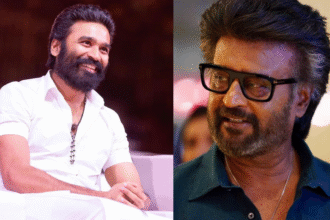The controversies around Deepika Padukone’s exits reveal not just personal choices but structural fissures that demand an industry-wide reflection.
Mumbai: Bollywood’s star system, long seen as its greatest asset, today appears to be its most visible fault line. The sudden withdrawal of Deepika Padukone from two marquee projects the sequel to Kalki 2898 AD and Sandeep Reddy Vanga’s Spirit has sparked not only speculation but also a reckoning. Are these isolated career decisions, or symptoms of a deeper malaise within Hindi cinema?
The official statements, couched in the language of “commitment” and “partnership,” were careful not to apportion blame. Yet, almost instantly, an alternative narrative took shape: whispers of fee hikes, curtailed roles, luxury demands, and rigid working hours. The director’s cryptic social media posts, the production house’s guarded announcement, and the flurry of media leaks together constructed a layered battlefield not of scripts and performances, but of public perception and private bargaining.
In this, Bollywood inadvertently laid bare the cultural grammar of its stardom: conflicts rarely resolved in boardrooms spill into curated PR campaigns, cryptic Instagram stories, and competing leaks. Professional disagreements become fodder for the marketplace of public opinion. Stardom, here, is no longer just charisma on screen; it is leverage wielded in negotiations, sometimes to the detriment of the film itself.
Contrast this with South Indian cinema. Telugu and Tamil industries, while not free of egos, have built a system where stars are embedded in narratives larger than themselves. Their personas are grounded in humility, sincerity, and cultural relatability. The “man of the masses” archetype binds audiences across geographies, allowing modestly budgeted films to become pan-India sensations. Films like Pushpa, RRR, and Kantara did not merely ride on star power; they expanded it by anchoring stars in stories that resonated with collective aspirations.
Veterans within Bollywood have long warned of the consequences of excess. Aamir Khan, in a recent interview, called it “shameful” that producers routinely bear the costs of actors’ personal staff and entourages. Filmmaker Anurag Kashyap lamented how shoots are treated as “picnics,” with money squandered on luxuries while scripts and technical departments are underfunded. Their critiques echo a growing sentiment: that Hindi cinema’s inflationary star culture has made films economically unviable and creatively impoverished.
The numbers bear this out. In 2024, Hindi cinema’s box office revenues dipped by 13%, with barely half a dozen films crossing the ₹100-crore mark a steep decline from just five years ago. In the same period, Telugu and Tamil cinema expanded their reach and revenue, even surpassing Bollywood in annual grosses by 2021. The imbalance is stark: where Bollywood invests up to 50% of a film’s budget in a single actor’s fee, South Indian industries channel more into production value, technology, and storytelling.
At its core, the Deepika controversies are not about one actor’s decisions. They are a mirror to an industry where stardom has turned from a shared cultural phenomenon into a fragile economic gamble. A model that thrives on entitlement over professionalism, spectacle over substance, and exclusivity over relatability cannot endure.
If Bollywood must reclaim its leadership in Indian cinema, it needs a recalibration one where stars remain luminous, but the film remains larger than the star. Commitment must mean more than contracts; it must mean accountability to story, audience, and industry. Without this shift, Bollywood risks becoming a spectacle of its own contradictions, even as the South quietly scripts the future.















